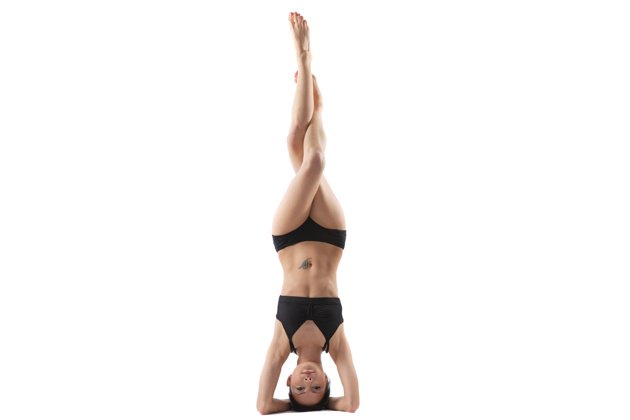When we teach yoga, we use words and phrases to orient people to certain parts of the body. Knowledge of these points is essential to create healthy alignment and to allow students to customize each pose as they see fit.
As students, we hear these words and phrases and try to interpret where they are on the body or what action we are being asked to take.
We know from watching the class that everyone can have a different understanding of these body parts and actions. People come to class with a lot on their mind, so the more efficient we teachers can be with our words, the better. It can be helpful to know some basic references so you can set up the alignment correctly.
In this first part of a two-part article, I refer to 6 key anatomical reference points for yoga that can be helpful to understand.
1. Feet Hip Width Apart
It’s interesting to watch the class when you request people to stand “with feet hip width apart.” In many cases, it can be due to the student not hearing the instruction or just being less diligent about positioning the feet in this way.
Use the reference point of the hip joint and imagine a straight line down to the ankle joint, traveling down the outer thigh. Stack the hip joint over the ankle joint (you can use your lateral malleolus, that ball-like structure that sticks out of your ankle joint as reference).
Be sure your knees point directly forward or slightly move them to that position, noticing if the tendency is to have the knees falling in towards each other (known as “knock-kneed”).
2. Stacking Hips Over Heels
Now that we’ve discussed the alignment of bringing the feet to hip width, we can take this foundation and when we come into a Forward Fold, create healthy alignment in that position too. As you have your feet at hip width and fold forward, bend your knees if you need to in order to keep the hips in line with the heels.
The other tip you’ll potentially need to use is to lift your sitting bones up. Working these two actions together will allow you to stack your hips over your heels. This position stretches the hamstrings and allows the upper body to relax.
3. Knees in Line With the Hips
As we work the concept of “feet at hip width” up the legs, we come to a related physical orientation, that of “keeping the knees in line with the hips.”
If you stand with your feet at hip width and your knees at hip width, arms at your sides, palms forward, you’d be in “Anatomical Position,” that “home base” of positions where the joints are aligned.
When we start to take the knees outside hip width, as in poses that have us in a squat for instance, we’re typically externally rotating our hips or opening the inner thighs.
But in poses like Bow or Wheel, when the knees widen beyond hip width, we’re actually decreasing the width available in our lower back for the backbend we’re trying to do. This can make these poses uncomfortable and actually a lot harder than if we stay at hip width as much as possible.
4. Stacking the Knee Over the Heel
There is a good amount of “stacking of joints” that occurs in yoga and stacking the knee over the heel is a common reference in poses like Warrior I and II. In this position, the knee joint is most steady. As the pose goes deeper in its expression, the front foot may need to move forward to keep the knee over the heel.
5. Drawing the Shoulder Blades Together
This can be an important action in many poses to allow one to open the chest. When we use the muscles called the Rhomboids, we are drawing our shoulder blades closer together. The resulting effect is to open the chest or what may be referred to as “stretching across the collarbones.”
This can be a helpful action to take in poses like Wheel, Locust, Bow, and Upward Dog. It’s also helpful to be aware of this action as you are sitting at your desk and possibly hunching over your computer.
6. Shoulders Back and Down
The shoulder joint is a ball and socket joint (like the hip), and its most stable position is when the “ball” part of the upper arm bone, the humerus, fits nicely into the “cup” formed by the shoulder blade or scapula.
That “fossa” of the scapula holds the humeral head with the best support from the nearby muscles, ligaments, and tendons when you relax your shoulders “down the back.”
If you hunch your shoulders up by your ears and then drop them down in a relaxed position and slightly draw the shoulder blades together using your Rhomboids, you’ll create steady shoulders. You can use this for support in poses like Side Plank, Crow, Upward Dog, and many inversions like Handstand that depend on shoulder steadiness to create safety and stability.
These 6 anatomical references can be applied to many of the poses that we do. They are also helpful alignment cues for healthy posture, both when seated or standing.
The more we can integrate these movements into our day, whether while practicing yoga or in any other physical activity, the healthier our movements will be, the more integrity our movements will have, and the longer we will be able to do them without pain or injury.


